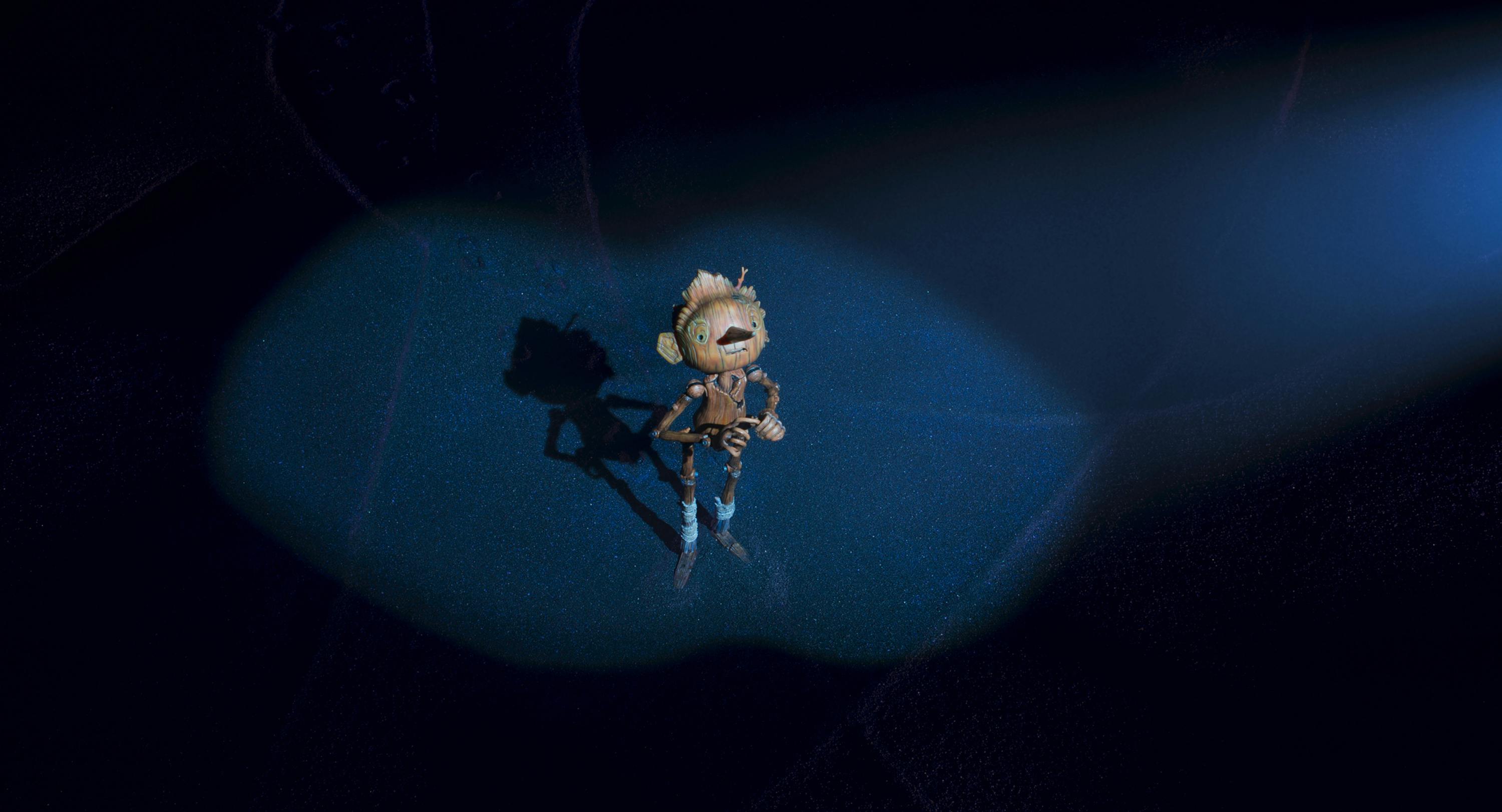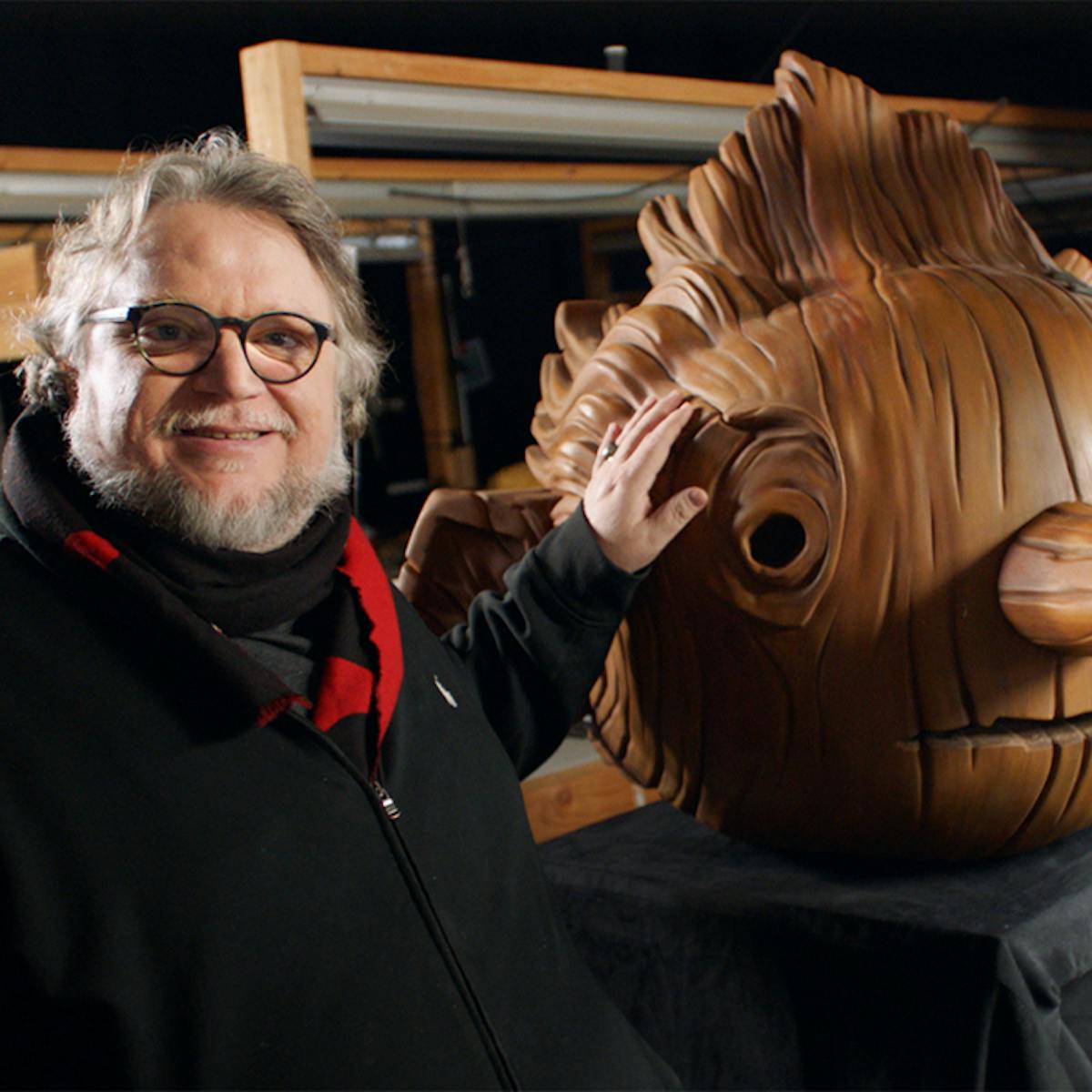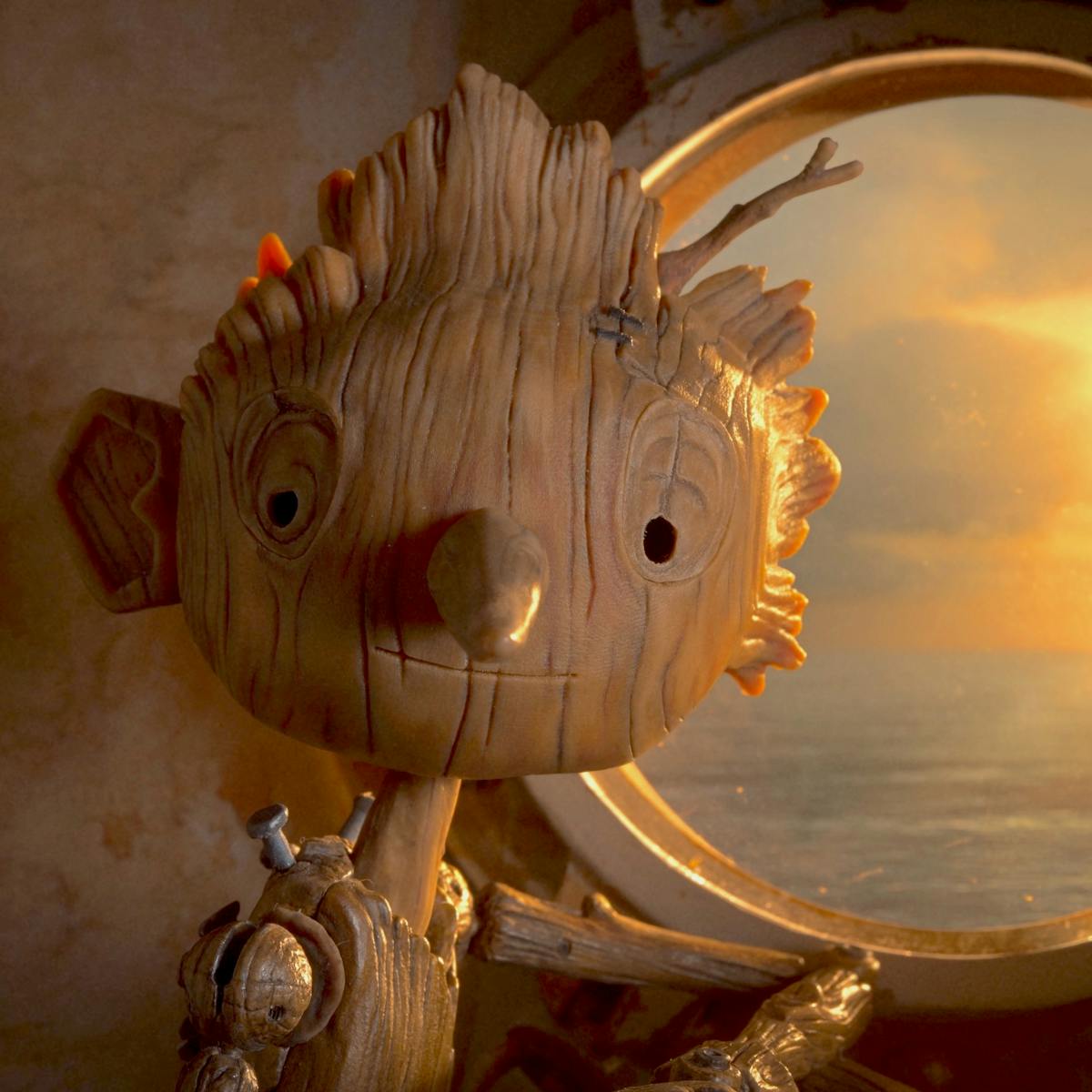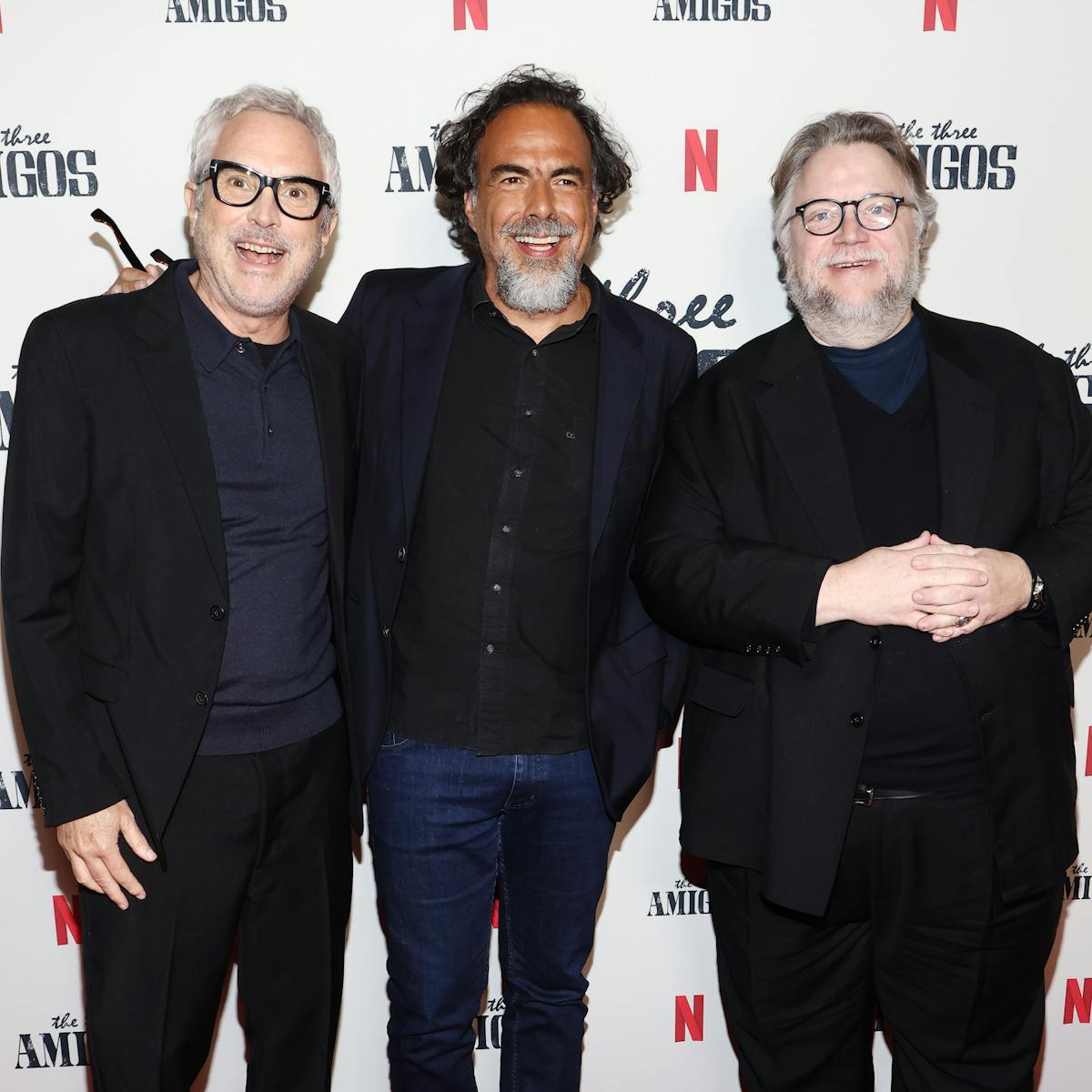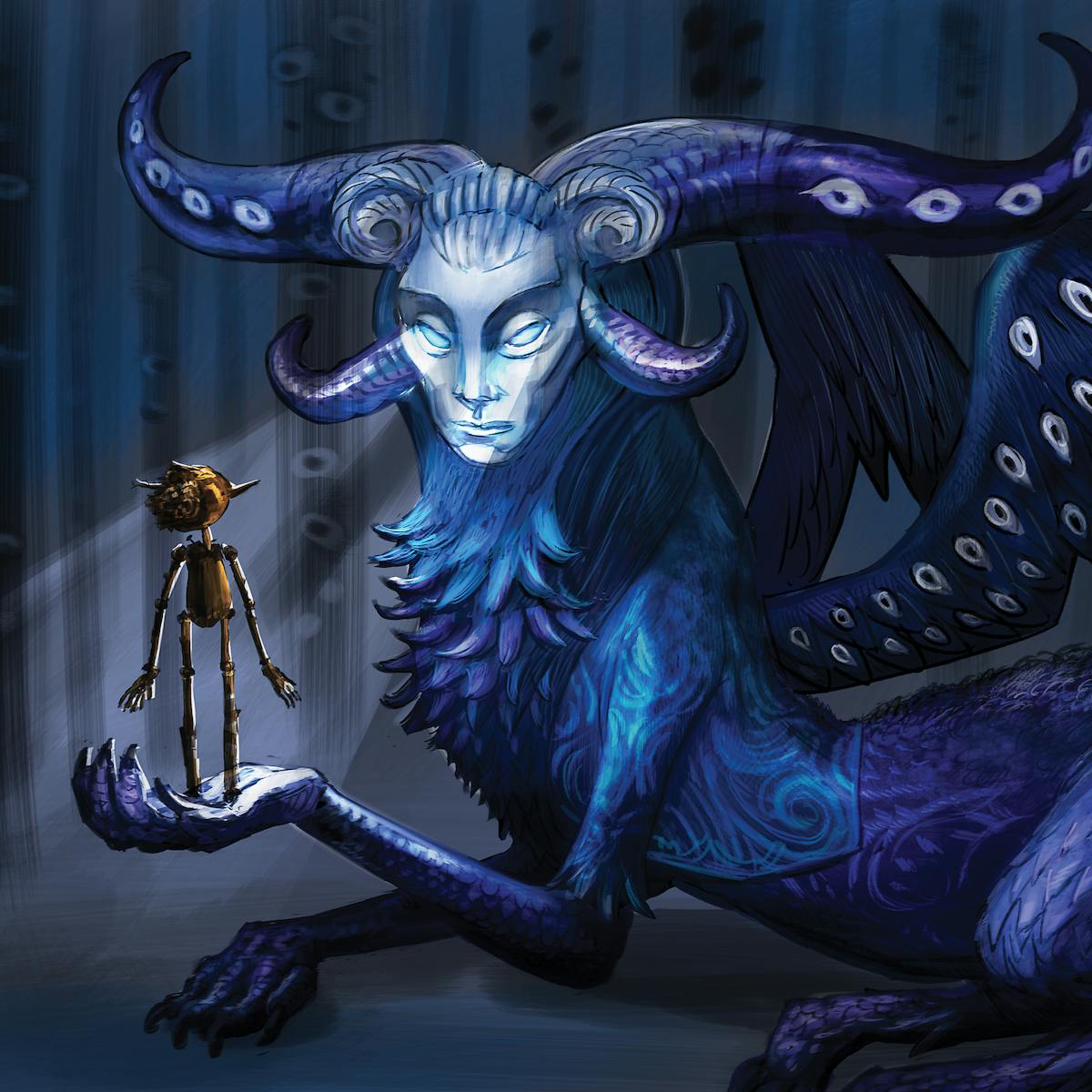The writer-director and his collaborators consider imperfection, death, and family ties in Guillermo del Toro’s Pinocchio.
If you ask Academy Award winner Guillermo del Toro about the themes that run through his filmography — from his inventive 1992 directorial debut Cronos to last year’s gorgeous, Oscar-nominated stop-motion animated fable Guillermo del Toro’s Pinocchio — he will point to two: “One of them is the virtue of disobedience, which is vital,” says del Toro. “To be disobedient is to be a thinking person. The other one is the absolute inalienable right to be fucked up, to be imperfect, which I defend. Imperfection is one of the most beautiful things. I think those themes are very well represented in the [idea of the] monster, or in the fear of death . . . I’ve been thinking about dying since I was seven. I’ve been a death groupie because I think it makes life make sense. I really believe that.”
While both ideas are center stage in Pinocchio, which del Toro co-directed with Mark Gustafson (2009’s Fantastic Mr. Fox) and co-wrote with Patrick McHale (2014’s Over the Garden Wall), the Mexican auteur also infused the film with yet more strikingly universal themes, such as the imperfect love that exists between fathers and sons. Set in Benito Mussolini’s Italy, where Pinocchio eventually becomes the only character to defy the totalitarian political order, it’s a movie that might be viewed as the spiritual sibling to two of del Toro’s Spanish-language films, 2001’s The Devil’s Backbone and 2006’s Pan’s Labyrinth, both supernatural-inflected tales that center on child protagonists and unfold against the cruel backdrop of fascism and war.
“As Mussolini ascends to power in Italy, everyone around Pinocchio behaves like a puppet and obeys,” del Toro says. “It’s the puppet that chooses to be disobedient, and through that disobedience, he finds his own morality, his own soul, and his own humanity.”
“It’s a very existential tale — a character thrown into the world with a blank slate to find out who he is and why he was born,” del Toro adds. “Can something that was never alive become human? And what makes us human? What makes our span in this world precious and valuable and important? Like any other good Mexican, I came up with one answer: death. I wanted to make it a meditation about how briefly we live and how death looms over us.”
Below, del Toro and his key collaborators share thoughts on the big ideas embedded in their beautifully realized, and BAFTA Best Animated Film-winning, tale of a little puppet making his way through the wide world.
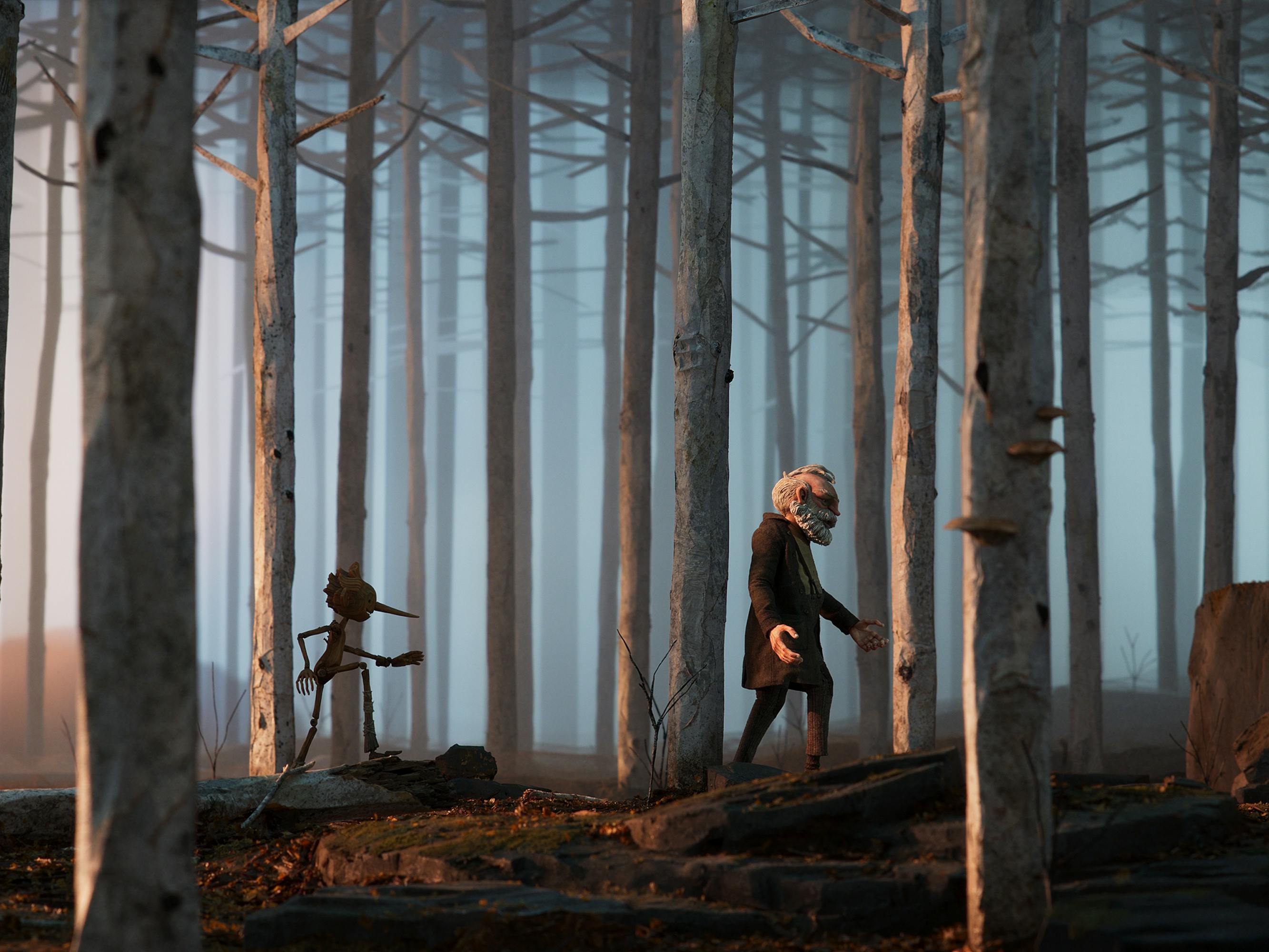
Pinocchio (Gregory Mann) and Geppetto (David Bradley)
Fathers and Sons
“With Guillermo, there are always certain themes that repeat themselves — fathers and sons; the darkness and the light, from [his feature debut] Cronos on — especially in things like The Shape of Water, The Devil’s Backbone, and Pan’s Labyrinth. It’s that all-encompassing worldview that he’s got. The other thing [Pinocchio has in common] with his earlier work is his decision to set the story between the wars in fascist Italy. That ties back to Pan’s Labyrinth and Devil’s Backbone and the Spanish Civil War. It’s an era he’s interested in because of what it tells us about today. Unfortunately, it tells us a lot about today that we probably didn’t anticipate … but the film really has a resonance that none of us realized when we first set it up at Netflix. That just enriches the story. It’s really a Pinocchio for our times.”
— Producer Gary Ungar
“The movie is constructed in father and son stories. There is a very deliberate desire to show father and son stories that show sons finally being able to tell their fathers what they think, whether it’s Spazzatura the monkey rebelling finally from the oppression of Count Volpe, or Candlewick being able to tell his fascist father what it is that he sees him do, or Pinocchio and Geppetto being able to finally see each other and accept their differences.”
—Guillermo del Toro
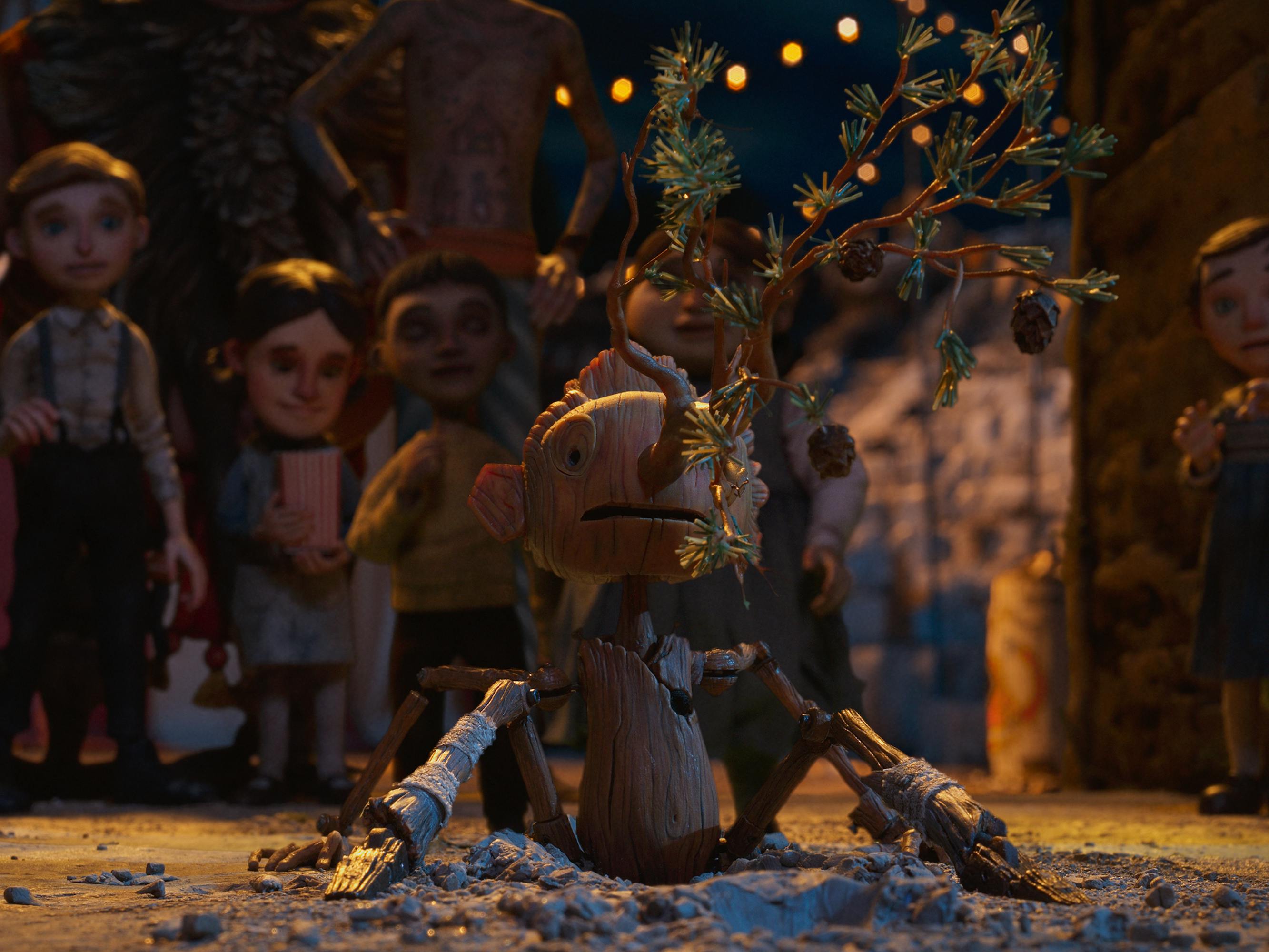
Pinocchio (Gregory Mann)
The Virtue of Disobedience
“There are two things that are very different with this Pinocchio. Contrary to [every other version of] Pinocchio, disobedience here is a virtue. And contrary to [every] other Pinocchio, it’s Pinocchio that transforms the people around him, not transforms himself to please and be accepted by the people around him. Geppetto and the Cricket learn from him. Geppetto starts the film talking about perfection. ‘Look at this pinecone. It’s not perfect. We’ve got to find a perfect one.’ And he ends up embracing [Pinocchio] on the beach [near the end of the film] and he says, ‘Be who you are, exactly as you are. And I love you.’”
—Guillermo del Toro
“The important thing with [the] church [in the film] was that it needed to be a place where people accept soulfulness, religion, and all that, but they reject the fact that a puppet has all of a sudden become alive. It was very important that Pinocchio came into the church and that it felt grand because he just came into the world and he needed to be in awe of the world. And I thought the best place to do that is the church. And the beautiful thing about it is everybody’s there praying for miracles and a miracle walks in and everybody gets scared.”
—Guillermo del Toro
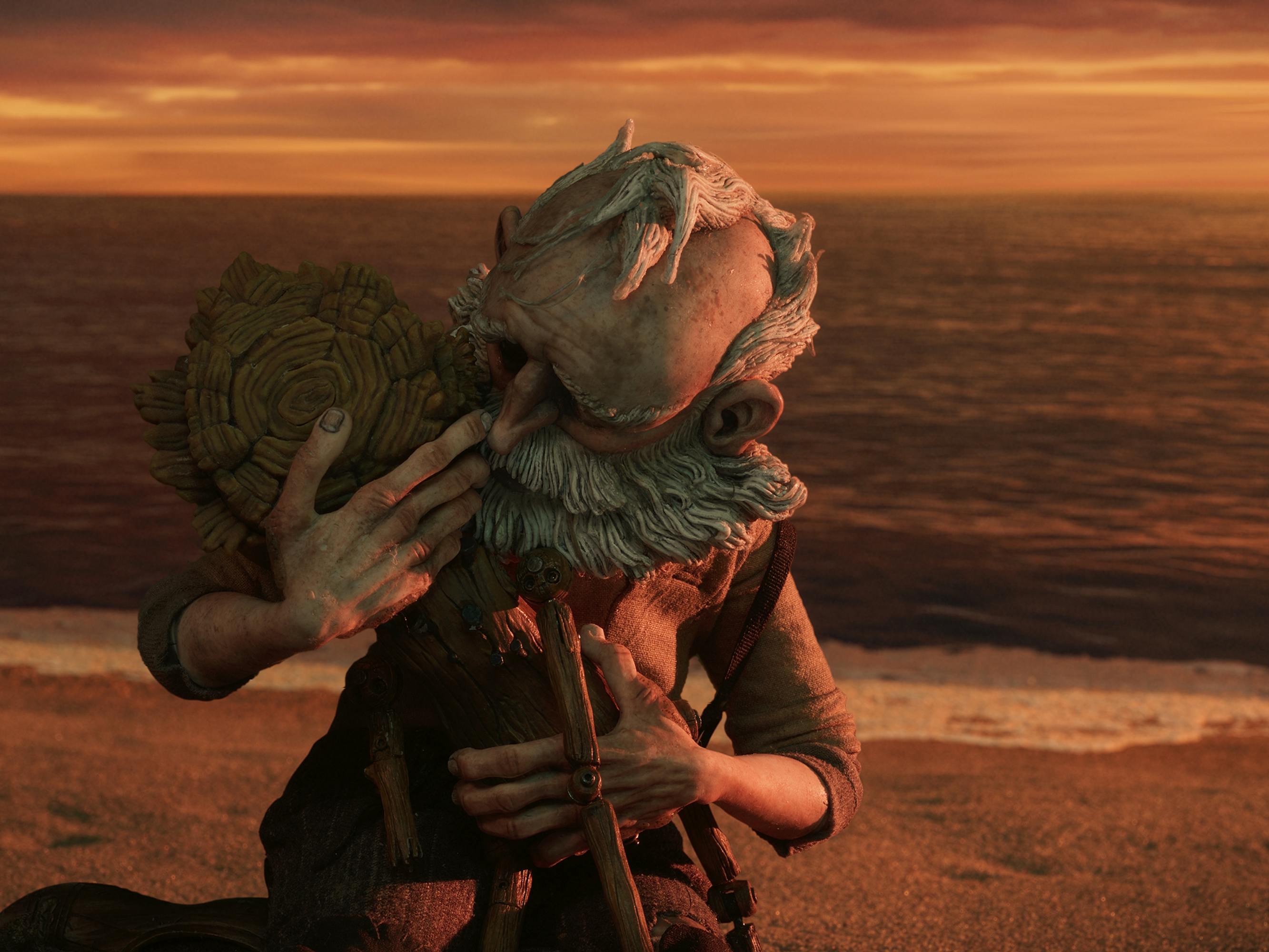
Geppetto (David Bradley) and Pinocchio (Gregory Mann)
Becoming Who You Are
“The thing that you long for the most, which is in Pinocchio, is to be seen by your parents as an ideal son or an ideal child, no matter what you do, because that’s who you are.”
—Guillermo del Toro
“The first time I thought about doing Pinocchio, I was in my teens, and I [felt] a very intimate relationship between [the characters of] Pinocchio and Frankenstein’s monster, which I still believe exists. [Pinocchio is a] character thrown into the world with a blank slate to find out who he is, what he’s doing in this world, and why he was born. It’s a very existential tale, and one that I thought would be interesting to do about becoming who you are — not transforming yourself for others, which goes counter to the traditional take on Pinocchio. What was clear in my mind was that he should never change, nor should that be a goal to which [he aspires].”
—Guillermo del Toro
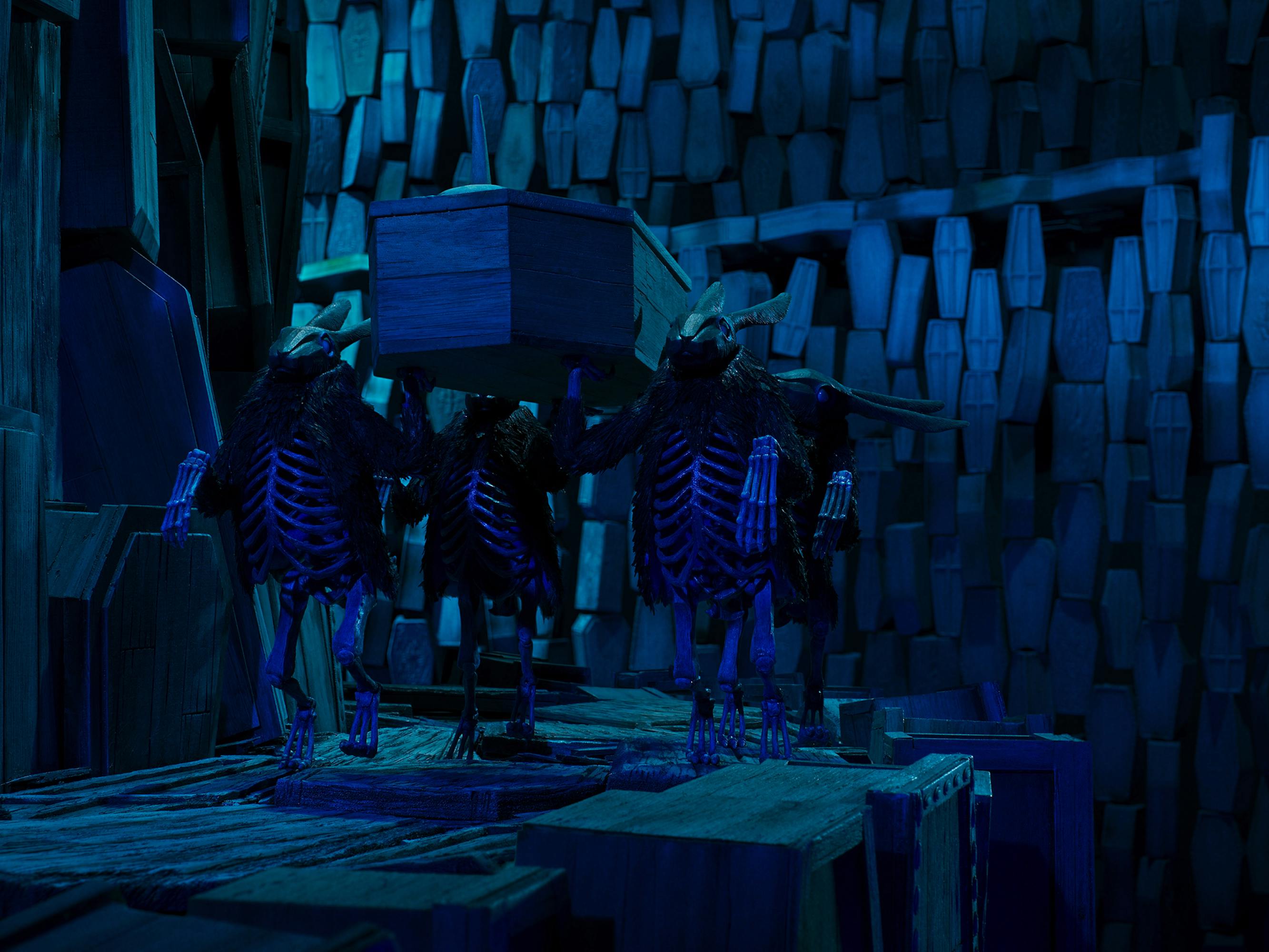
Black Rabbits (Tim Blake Nelson)
Life and Death
“Alfonso Cuarón makes fun of me. He says, ‘You’re really a Catholic filmmaker because in all your movies, happiness begins after death.’ I think he has a point. It was very moving for me to do Pinocchio because he stays alive — that’s the difference from all my other movies. He stays alive after everybody [else] dies. And this is what made it very difficult to finance because I tried to explain to people how actually life affirming and emotional and beautiful the movie was when the theme was death. I think the paradox is that when you talk about death, you really are talking about life. And that’s what makes it moving. If life doesn’t end, it never began.”
—Guillermo del Toro
“There is an underlying theme that is very, very profound for me, which is to understand that the metronome of life is death. There’s no tragedy in going. There’s a tragedy in wasting our lives while we are together. That is very profound for me and very heartfelt because I lost my dad about five years ago, after The Shape of Water, and I lost my mom the day before the [London Film Festival] premiere of Pinocchio. I’ve really come to understand that I am in the last quarter of my life. I’m 58, and I have one quarter [left] to make good for the people that are going to stay behind. It’s a deep reflection for me.”
—Guillermo del Toro
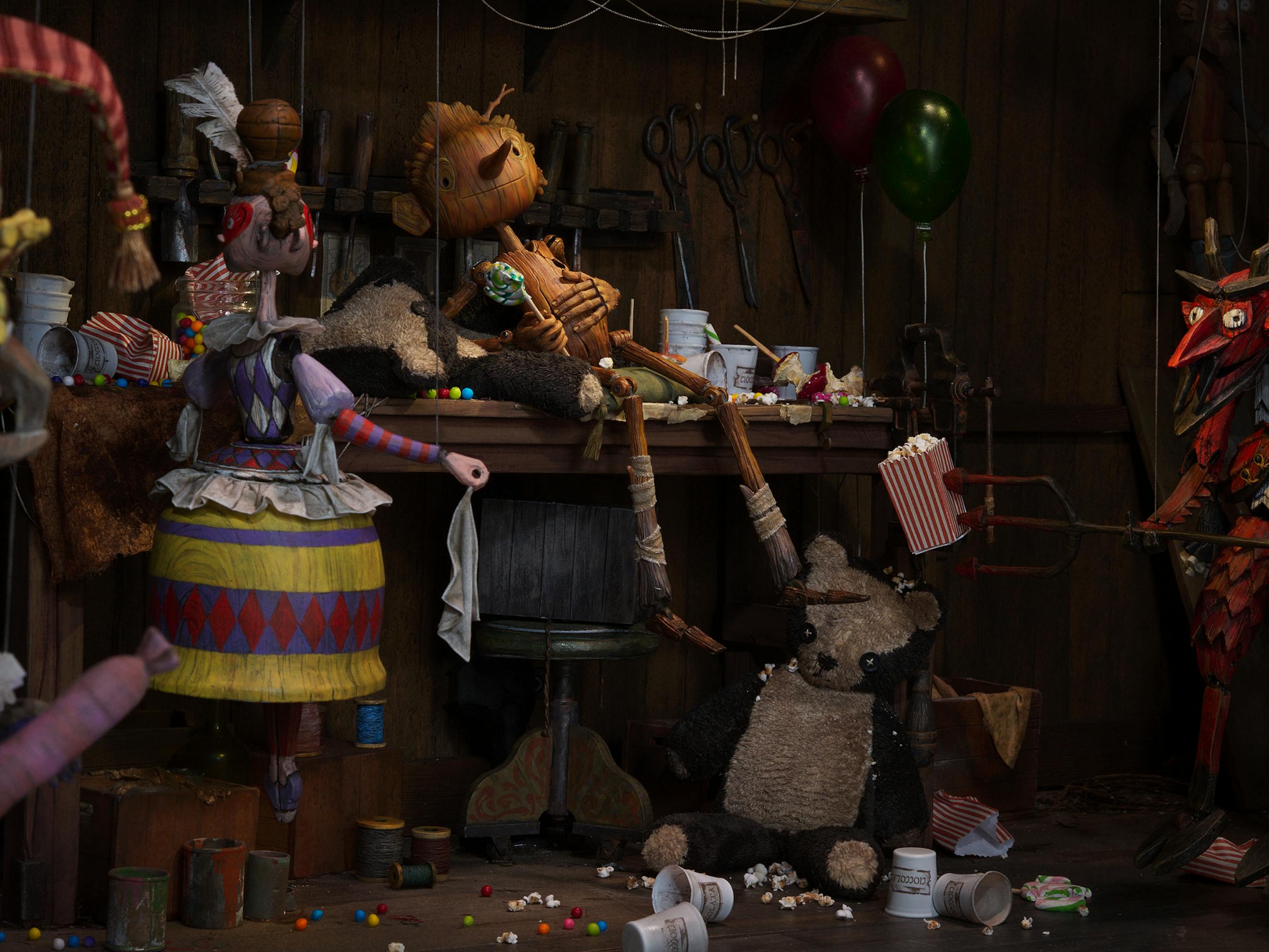
Pinocchio (Gregory Mann)
Who’s the Puppet?
“I really liked the notion of a creation that comes into the world, absolutely fresh, and has really no notion of consequences. So, what happens when that character then goes on this journey and discovers things about the real world and how it actually works? The notion of putting those [ideas] against the backdrop of the rise of fascism in Italy between World War I and World War II seemed really fascinating and strangely topical. Guillermo has had a long fascination with fascism — in the right way. He’s taken it on in some of his other films or used it as an element. These kinds of totalitarian governments, fascism, it’s all about essentially turning the populace into puppets who will do what they’re told. And [at the center of our story is] a character who is literally a puppet, but he’s not going to go along with this — he questions everything and that causes problems.”
—Co-director Mark Gustafson
“We wanted to create a movie about a puppet executed by using puppets to tell the tale. [This is] a story about a world, as Mussolini ascends to power in Italy, [where people] behave like puppets and obey everything they’re told, and a puppet that chooses to be disobedient and finds his own morality, his own soul, and his own humanity by that disobedience.”
—Guillermo del Toro
